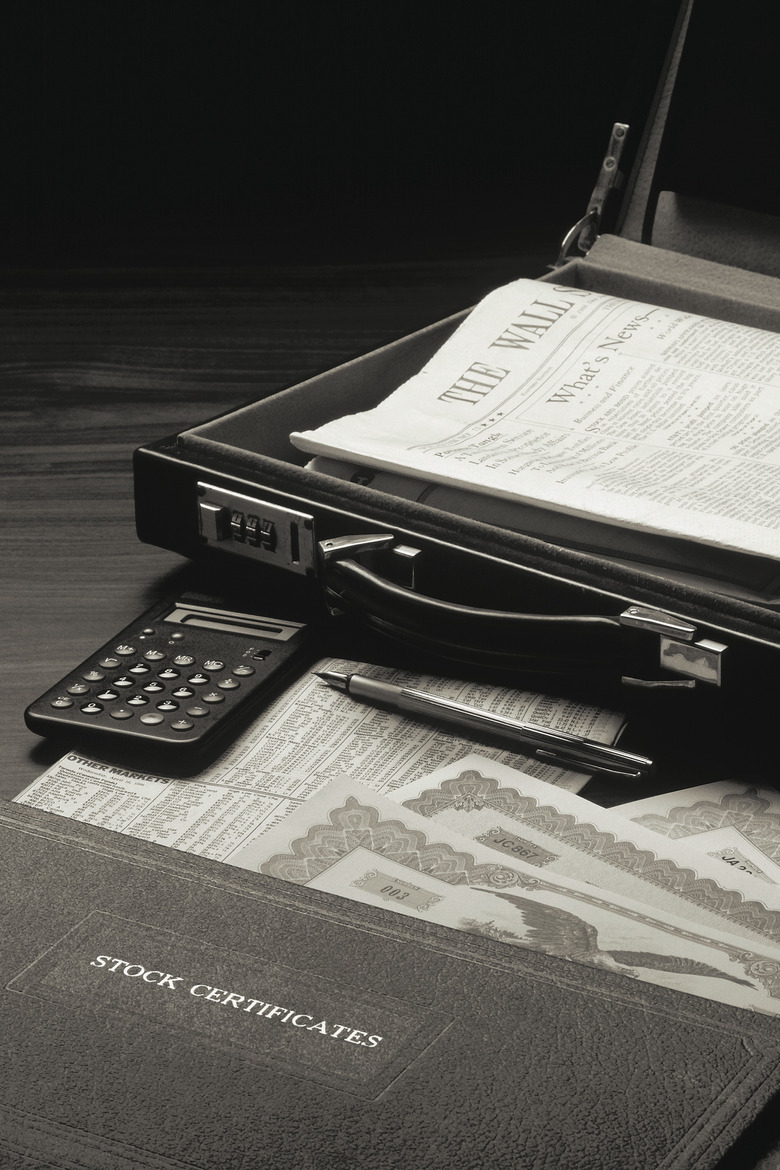How To Calculate Sharpe Ratio
The Sharpe Ratio, created in 1966 by Nobel laureate William F. Sharpe, is an equation to calculate risk-adjusted performance of a stock portfolio. The ratio determines whether a portfolio's profit can be attributed to correct thinking or high risk. The higher the ratio, the better the portfolio has performed after being adjusted for risk. While a certain portfolio may generate a great profit, that profit may be the result of huge and potentially dangerous risk. The exact calculation for the ratio requires subtracting the rate of a risk-free investment from the expected portfolio return, divided by the portfolio's standard deviation:
(rate of portfolio return – risk free rate) / portfolio standard deviation
Average Return and Standard Deviation
Step 1
List the annual returns of your portfolio. If your portfolio is five years old, begin from the first year. For example:
2005: 12 percent 2006: -3 percent 2007: 9 percent 2008: -8 percent 2009: 6 percent
Step 2
Calculate the average of portfolio returns by adding up each return percentage and dividing by the number of years.
For example: 12 + -3 + 9 + -8 + 6 = 3.2
This is your portfolio's average return.
Step 3
Subtract each year's individual return from average portfolio return. For example:
2005: 3.2 – 12 = -8.8 2006: 3.2 – -3 = 6.2 2007: 3.2 – 9 = -5.8 2008: 3.2 – -8 = 11.2 2009: 3.2 – 6 = -2.8
Step 4
Square the individual deviations.
For example: 2005: -8.8 x -8.8 = 77.44 2006: 6.2 x 6.2 = 38.44 2007: -5.8 x -5.8 = 33.64 2008: 11.2 x 11.2 = 125.44 2009: -2.8 x -2.8 = 7.84
Step 5
Find the sum of each year's squared deviation.
For example: 77.44 + 38.44 + 33.64 + 125.44 + 7.84 = 282.8
Step 6
Divide the sum by the number of years minus one.
For example: 282.8 / 4 = 70.7
Step 7
Calculate the square root of this number.
For example: 8.408
This the annual standard deviation of the portfolio.
Sharpe Ratio
Step 1
Place your three numbers into the Sharpe Ratio equation.
Step 2
Subtract the rate of risk-free return from the rate of return for the portfolio.
For example: (Using the previous numbers and the rate of return on a five-year US government bond) 3.2 – 1.43 = 0.3575
Step 3
Divide by the standard deviation.
For example: 0.3575 / 8.408 = 0.04252 (approximate)
This is your Sharpe Ratio.
Cite This Article
MLA
Kroll, Jess. "How To Calculate Sharpe Ratio" sciencing.com, https://www.sciencing.com/calculate-sharpe-ratio-7208993/. 24 April 2017.
APA
Kroll, Jess. (2017, April 24). How To Calculate Sharpe Ratio. sciencing.com. Retrieved from https://www.sciencing.com/calculate-sharpe-ratio-7208993/
Chicago
Kroll, Jess. How To Calculate Sharpe Ratio last modified March 24, 2022. https://www.sciencing.com/calculate-sharpe-ratio-7208993/
